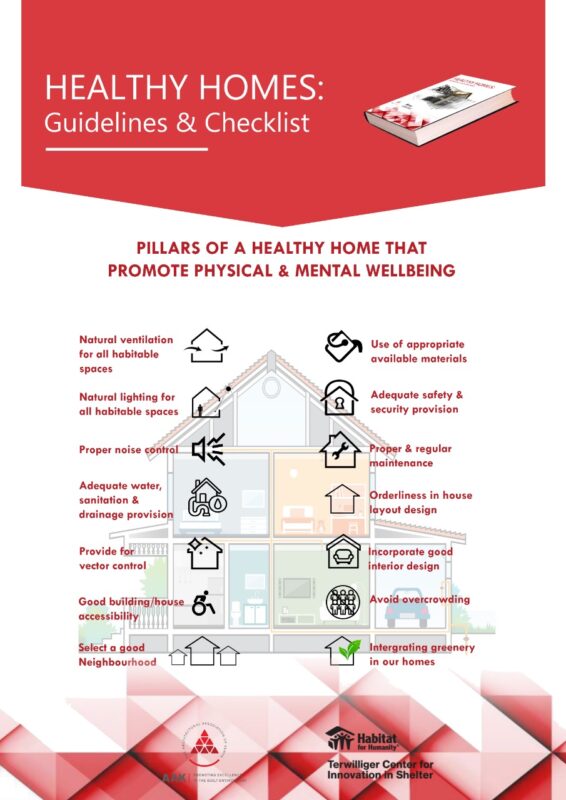AAK HEALTHY HOMES: GUIDELINES AND CHECKLIST
- Version
- Download 2554
- File Size 4.00 KB
- Create Date November 21, 2022
- Download
One thing that the COVID-19 pandemic brought to the fore was that most homes do not adhere to health standards. The pandemic redefined the living norm, and the home became the first line of defense when governments put in place protocols to reduce the spread of the virus. An assessment of the impact of COVID conducted by AAK in informal settlements within the Nairobi Metropolitan Region revealed that it was very challenging for people living in the informal settlements to comply with some of the COVID-19 prevention protocols, such as; social distancing, since the dominant housing typology is single rooms. The pandemic also hit when these settlements had been facing a perennial lack of and shortage of basic infrastructure such as water and sanitation, increasing the prevalence of infection among household members.
Global planning principles provide for the creation of sustainable living with adequate access to proper housing and basic essential infrastructure within the neighborhoods. Unfortunately, 80% of buildings in Kenya are built without engaging professionals. This means that most buildings in the country are built by unqualified persons and lack the minimum standards of a healthy home. Many of these buildings suffer from sick building syndrome- a cause of numerous illnesses experienced by residents who are completely oblivious of the cause.
The AAK, together with Habitat for Humanity International, developed the Healthy Homes Guidelines and Checklist to provide design standards that will help all housing typologies, including those in informal settlements, to be resilient to COVID-19 and future pandemics. In their simple form, the guidelines are privy to the fact that most builders are self-builders who engage artisans and unqualified contractors. They provide the minimum standards which should be adhered to during construction and renovation and can guide vetting of already constructed homes.
The last section of the document contains a checklist of all the aspects of a home that the user should consider. This enables them to get a clear picture of the health aspects of the house and know if it is a fit one.
As we continue to advocate for the role of built environment professionals in the construction industry, this is an immediate solution to achieving healthy homes in our country

